Top speed 80 km/h Wingspan 12 m | Length 8.92 m | |
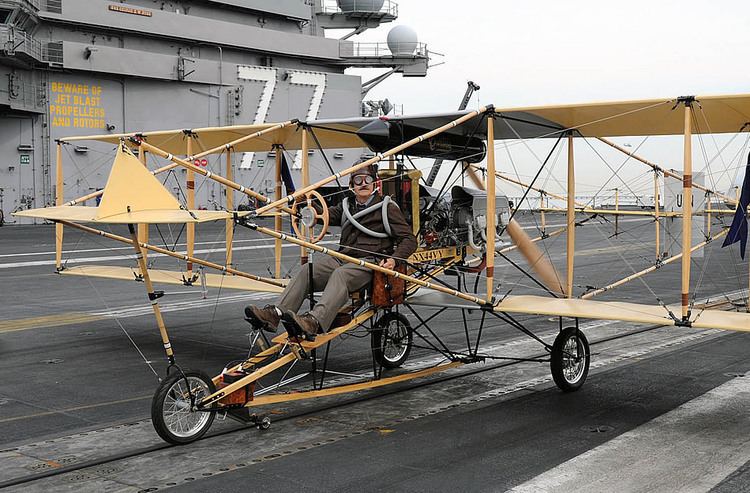 | ||
Manufacturer | ||
Curtiss model d
The 1911 Curtiss Model D (or frequently, "Curtiss Pusher") was an early United States pusher aircraft with the engine and propeller behind the pilot's seat. It was among the very first aircraft in the world to be built in any quantity — all of which were produced by Curtis during an era of trial-and-error development and equally important parallel technical development in internal combustion engine technologies.
Contents
- Curtiss model d
- Development
- Existing aircraft and reproductions
- Operators
- Specifications Model D Type IV
- References
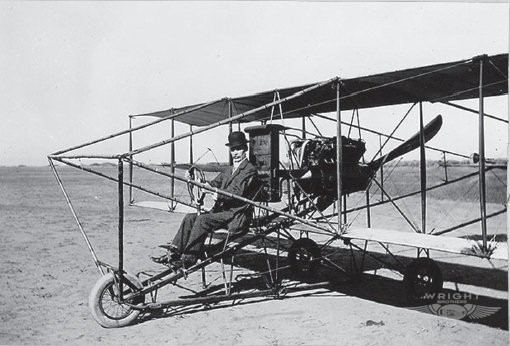
It was also the aircraft type which made the first takeoff from the deck of a ship (flown by Eugene B. Ely off the deck of the USS Birmingham on November 14, 1910, near Hampton Roads, Virginia) and made the first landing aboard a ship (the USS Pennsylvania) on January 18, 1911, near San Francisco, California.

It was originally fitted with a foreplane for pitch control, but this was dispensed with when it was accidentally discovered to be unnecessary. The new version without the foreplane was known as the Headless Pusher. Like all Curtiss designs, the aircraft used ailerons instead, which first existed on a Curtiss-designed airframe as quadruple "wing-tip" ailerons on the 1908 June Bug to control rolling in flight, thus avoiding use of the Wright brothers' patented wing warping technology.
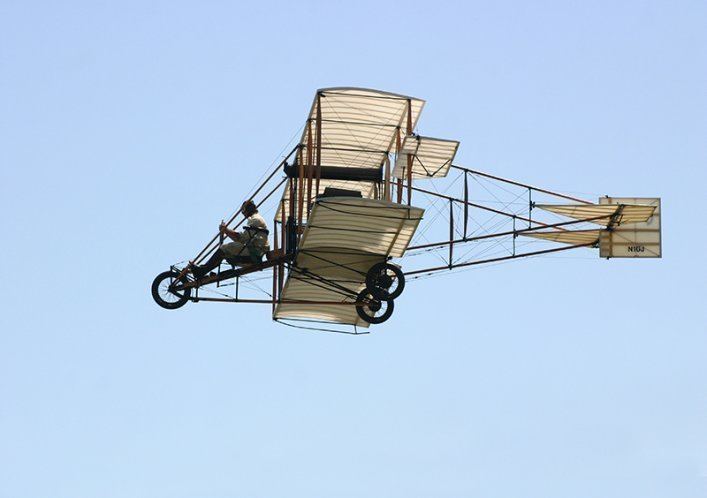
Development
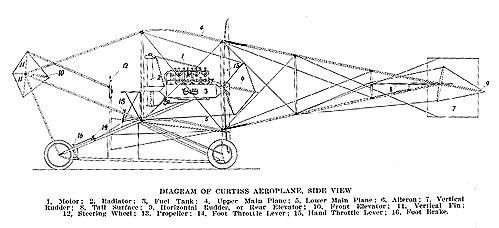
The Model D was a biplane fitted with a wheeled tricycle undercarriage. The construction was primarily of spruce, with ash used in parts of the engine bearers and undercarriage beams, with doped linen stretched over it. The outrigger beams were made of bamboo. Prevented by patents from using the Wright Brothers' wing warping technique to provide lateral control, and with neither the Wrights nor himself likely to have known about its prior patenting in 1868 England, Curtiss did not use the June Bug's "wing-tip" aileron configuration, but instead used between-the-wing-panels "inter-plane" ailerons, instead, as directly derived from his earlier Curtiss No. 1 and Curtiss No. 2 pushers. In the end, this proved to be a superior solution. Both the interplane and trailing-edge ailerons on these early aircraft did not use a hand or foot-operated mechanism to operate them, but very much like the earlier Santos-Dumont 14-bis, required the pilot to "lean-into" the turn to operate the ailerons — on the Curtiss pushers, a transverse-rocking, metal framework "shoulder cradle", hinged longitudinally on either side of the pilot's seat, achieved the connection between the pilot and aileron control cabling. Almost all Model Ds were constructed with a pusher configuration, with the propeller behind the pilot. Because of this configuration, they were often referred to as the "Curtiss Pusher". Early examples were built in a canard configuration, with elevators mounted on struts at the front of the aircraft in addition to a horizontal stabilizer at the rear. Later, the elevators were incorporated into the tail unit, and the canard surface arrangement dispensed with, resulting in what became called the Curtiss "Headless" Pushers.
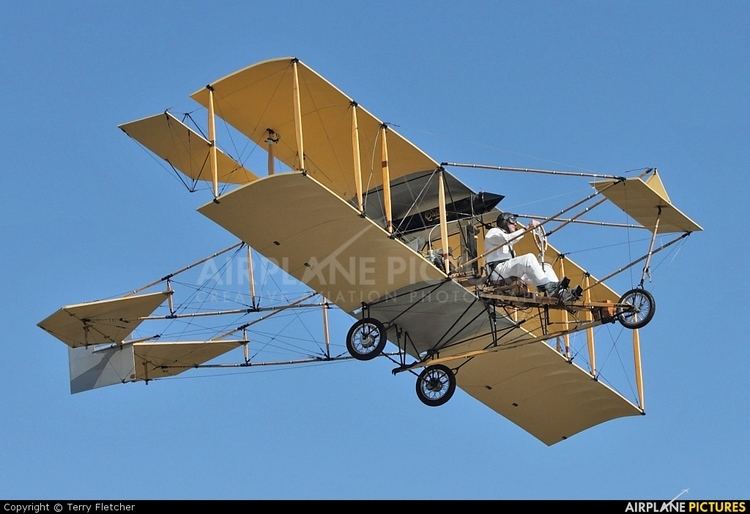
In addition to amateur aviators, a Model D was purchased in April 1911 by the Aeronautical Division of the U.S. Army Signal Corps as a trainer (S.C. No. 2), and by the Navy as an airborne observation platform. A number of them were exported to foreign militaries, as well, including the Russian Navy. On November 14, 1910, Eugene Ely took off from the USS Birmingham in a Model D. This was the first time an aircraft had taken off from a ship. On January 18, 1911, Ely landed a Model D aboard the USS Pennsylvania. This was the first aircraft to land on a ship.
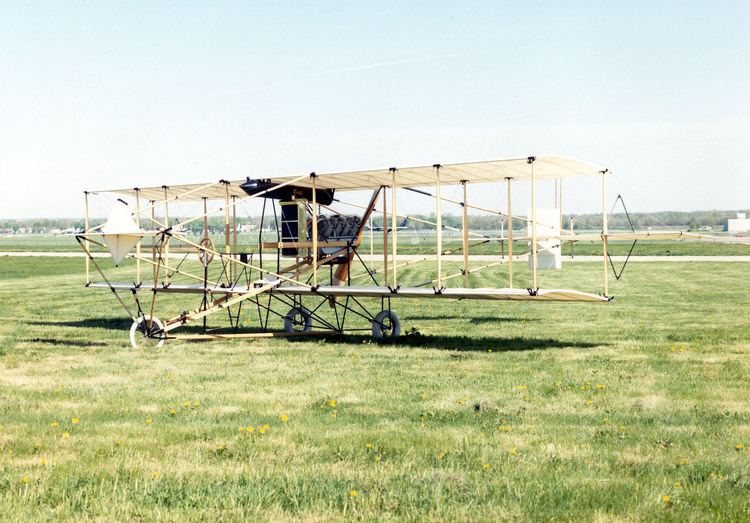
Upon his election in November 1915, Congressman Orrin Dubbs Bleakley became the first government official to fly from his home state to DC. The trip was made in a 75 hp (56 kW) Curtiss biplane from Philadelphia, piloted by Sergeant William C. Ocker, on leave from the United States Aviation Corps at the time. The trip took 3¼ hours, including an unscheduled stop in a wheat field in Maryland.
Existing aircraft and reproductions
A number of Curtiss Pusher original and reproduction aircraft exist, and reproductions of the design date as far back to the era when the original aircraft was in production, mostly built by private parties.
The Old Rhinebeck Aerodrome has had a flyable reproduction Model D Pusher in their collection since 1976, which has been powered with a Hall-Scott V8 engine earlier in its weekend air show appearances, and more recently has been powered with a restored Curtiss OX-5 V8 engine.
The College Park Aviation Museum built a replica of the Curtiss Model D once flown in 1911 at College Park Airport in Maryland.
A Model D with an O-300 (145 hp) Cont. engine is at the Owls Head Maine Transportation Museum also.
A Model D replica is exhibited at Minneapolis-St. Paul International Airport.
Both 1910 and 1912 Curtiss Headless Pusher replicas are part of the Western Antique Aeroplane and Automobile Museum.
A flying reproduction of the Ely-Curtiss Model D Headed Pusher is at the Military Aviation Museum in Pungo, VA.
A replica is on display at the Durango Silverton Narrow Gauge Railroad Museum, Durango, Colorado.
Operators
Specifications (Model D Type IV)
General characteristics
Performance
